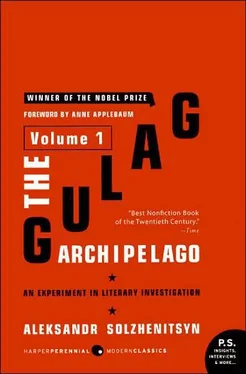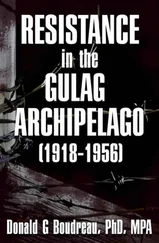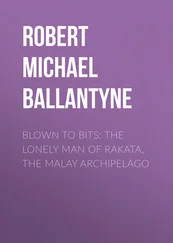• There were Schutzbiindlers who had lost the class battles in Vienna and had come to the Fatherland of the world proletariat for refuge.
• There were Esperantists—a harmful group which Stalin undertook to smoke out during the years when Hitler was doing the same thing.
• There were the unliquidated remnants of the Free Philosophic Society—illegal philosophical circles.
• There were teachers who disagreed with the advanced laboratory-team system of instruction. (In 1933, for instance, Natalya Ivanovna Bugayenko was arrested by the Rostov GPU—but in the third month of her interrogation, a government decree suddenly announced that the system was a faulty one. And she was let go.)
• There were employees of the Political Red Cross, which, through the efforts of Yekaterina Peshkova, was still defending its existence.
• There were mountain tribes of the North Caucasus who were arrested for their 1935 revolt. And non-Russian nationalities kept rolling in from one area, then another. (On the Volga Canal construction site newspapers were published in four national languages: Tatar, Turkish, Uzbek, and Kazakh. And, of course, there were readers to read them!)
• There were once again believers, who this time were unwilling to work on Sundays. (They had introduced the five-and the six-day week.) And there were collective farmers sent up for sabotage because they refused to work on religious feast days, as had been their custom in the era of individual farms.
• And, always, there were those who refused to become NKVD informers. (Among them were priests who refused to violate the secrecy of the confessional, for the Organs had very quickly discovered how useful it was to learn the content of confessions—the only use they found for religion.)
• And members of non-Orthodox sects were arrested on an ever-wider scale.
• And the Big Solitaire game with the socialists went on and on.
And last of all there was a category I have not yet named, a wave that was continually flowing: Section 10, also known as KRA (Counter-Revolutionary Agitation) and also known as ASA (Anti-Soviet Agitation). The wave of Section 10 was perhaps the most constant of all. It never stopped, and whenever there was another big wave, as, for instance, in 1937, 1945, and 1949, its waters became particularly swollen. [29] 27. This particular unremitting wave grabbed up anyone at all at any moment. But when it came to outstanding intellectuals in the thirties, they sometimes considered it cleverer to fabricate a case based on some conspicuously shameful violation (like pederasty; or, in the case of Professor Pletnev, the allegation that, left alone with a woman patient, he bit her breast. A national newspaper reports such an incident—and just try to deny it!).
Paradoxically enough, every act of the all-penetrating, eternally wakeful Organs, over a span of many years, was based solely on one article of the 140 articles of the nongeneral division of the Criminal Code of 1926. One can find more epithets in praise of this article than Turgenev once assembled to praise the Russian language, or Nekrasov to praise Mother Russia: great, powerful, abundant, highly ramified, multiform, wide-sweeping 58, which summed up the world not so much through the exact terms of its sections as in their extended dialectical interpretation.
Who among us has not experienced its all-encompassing embrace? In all truth, there is no step, thought, action, or lack of action under the heavens which could not be punished by the heavy hand of Article 58.
The article itself could not be worded in such broad terms, but it proved possible to interpret it this broadly.
Article 58 was not in that division of the Code dealing with political crimes; and nowhere was it categorized as “political.” No. It was included, with crimes against public order and organized gangsterism, in a division of “crimes against the state.” Thus the Criminal Code starts off by refusing to recognize anyone under its jurisdiction as a political offender. All are simply criminals.
Article 58 consisted of fourteen sections.
In Section 1 we learn that any action (and, according to Article 6 of the Criminal Code, any absence of action) directed toward the weakening of state power was considered to be counterrevolutionary.
Broadly interpreted, this turned out to include the refusal of a prisoner in camp to work when in a state of starvation and exhaustion. This was a weakening of state power. And it was punished by execution. (The execution of malingerers during the war.)
From 1934 on, when we were given back the term Motherland, subsections were inserted on treason to the Motherland—1a, 1b, 1c, 1d. According to these subsections, all actions directed against the military might of the U.S.S.R. were punishable by execution (1b), or by ten years’ imprisonment (1a), but the lighter penalty was imposed only when mitigating circumstances were present and upon civilians only.
Broadly interpreted: when our soldiers were sentenced to only ten years for allowing themselves to be taken prisoner (action injurious to Soviet military might), this was humanitarian to the point of being illegal. According to the Stalinist code, they should all have been shot on their return home.
(Here is another example of broad interpretation. I remember well an encounter in the Butyrki in the summer of 1946. A certain Pole had been born in Lemberg when that city was part of the Austro-Hungarian Empire. Until World War II he lived in his native city, by then located in Poland; then he went to Austria, where he entered the service, and in 1945 he was arrested there by the Russians. Since by this time Austrian Lemberg had become Ukrainian Lvov, he received a tenner under Article 54-la of the Ukrainian Criminal Code: i.e., for treason to his motherland, the Ukraine! And at his interrogation the poor fellow couldn’t prove that treason to the Ukraine had not been his purpose when he went to Vienna! And that’s how he conned his way into becoming a traitor.)
One important additional broadening of the section on treason was its application “via Article 19 of the Criminal Code”—“via intent.” In other words, no treason had taken place; but the interrogator envisioned an intention to betray—and that was enough to justify a full term, the same as for actual treason. True, Article 19 proposes that there be no penalty for intent, but only for preparation, but given a dialectical reading one can understand intention as preparation. And “preparation is punished in the same way [i.e., with the same penalty] as the crime itself (Criminal Code). In general, “we draw no distinction between intention and the crime itself, and this is an instance of the superiority of Soviet legislation to bourgeois legislation.” [30] 28. A. Y. Vyshinsky (editor), Ot Tyurem k Vospitatelnym Uchrezhdeniyam (From Prisons to Rehabilitative Institutions) , a collection of articles published by the Criminal Policy Institute, Moscow, Sovetskoye Zakonodatelstvo Publishing House, 1934.
Section 2 listed armed rebellion, seizure of power in the capital or in the provinces, especially for the purpose of severing any part of the U.S.S.R. through the use of force. For this the penalties ranged up to and included execution (as in every succeeding section).
This was expanded to mean something which could not be explicitly stated in the article itself but which revolutionary sense of justice could be counted on to suggest: it applied to every attempt of any national republic to act upon its right to leave the U.S.S.R. After all, the word “force” is not defined in terms of whom it applies to. Even when the entire population of a republic wants to secede, if Moscow is opposed, the attempted secession will be forcible. Thus, all Estonian, Latvian, Lithuanian, Ukrainian, and Turkestan nationalists very easily received their tens and their twenty-fives under this section.
Читать дальше












